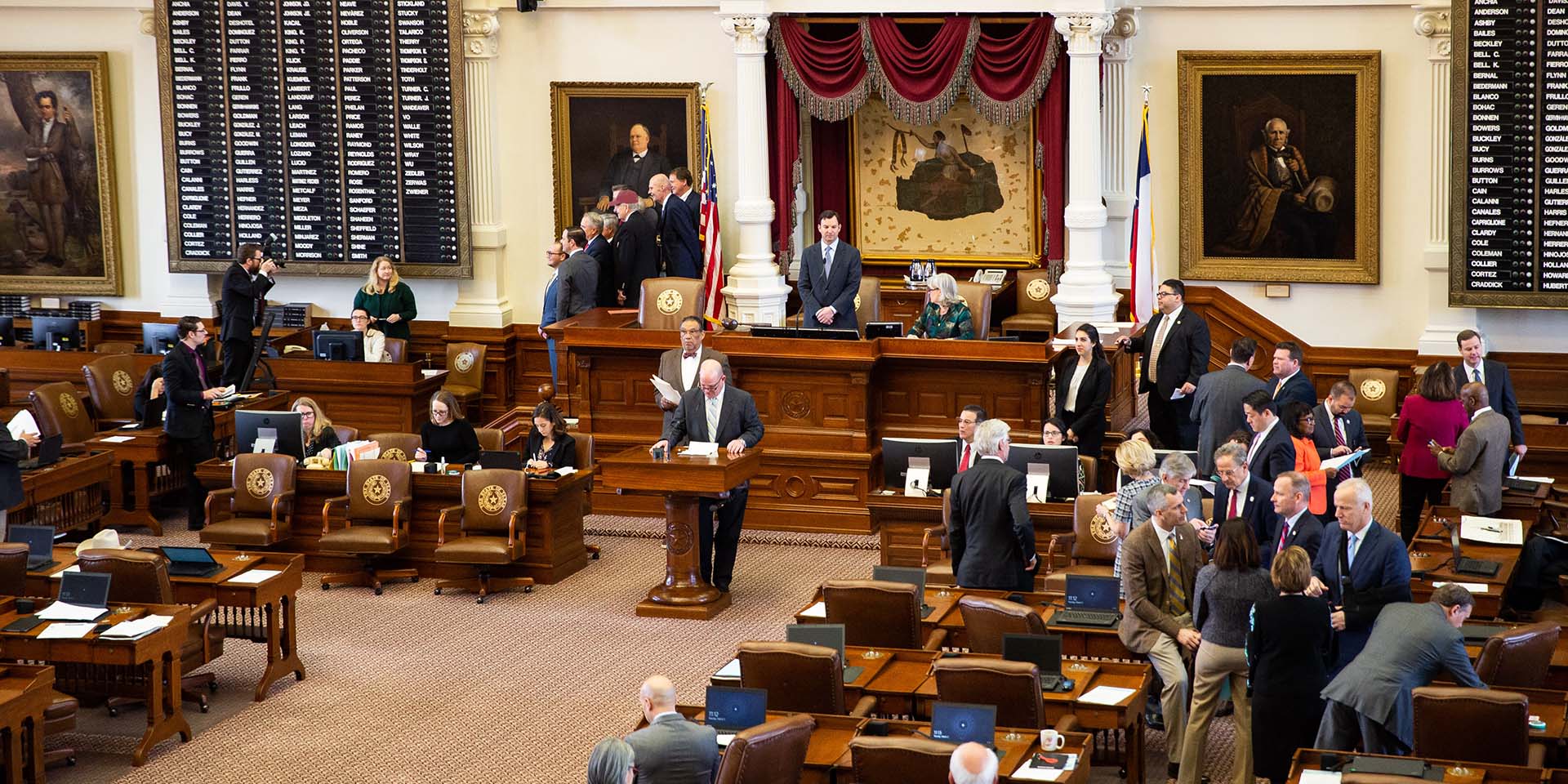Advocacy Guides and Toolkits

TCEA 2023
Legislative Priorities
Technology is now an integral part of the programming and the management of Texas school districts. Almost all aspects of running a district require the use of technology, and this will only increase. Additionally, as districts grapple with the complexities of educating all children, technology must be leveraged to assist in their efforts. TCEA has advocated for good public policy regarding the use of technology in our classrooms and districts for many years. We have been successful in helping to shape the policies regarding the availability and use of digital tools and resources, but there are still barriers that must be addressed.
Barriers
Broadband
The 87th Texas Legislature enacted HB 5, an omnibus bill that dealt with the state’s ability to provide affordable and scalable broadband for all households. This legislation tackled most problems TCEA and other entities identified as major barriers to broadband access. The 88th legislature should monitor the progress made by the Texas Broadband Development Office and make recommendations and adjustments where necessary.
However, there are still barriers that need to be addressed. Common Sense Media has found “that up to 60% of disconnected K–12 students, especially black and urban students, are unable to afford digital access. Up to 25% of disconnected students lack access to readily available and reliable broadband service, a barrier that disproportionately affects rural and Native American students. Finally, up to 40% of disconnected students face significant adoption barriers, such as insufficient digital literacy or language barriers.”1
Without reliable broadband at home, students are at a distinct disadvantage compared to their peers who have access 24/7. It is imperative that Texas provide the necessary leadership to solve the disparities in at-home broadband access, including the affordability and adoption of broadband.
Digital Literacy
Recent state legislation mandated that all students learn skills related to coding, computer programming, computational thinking, and cybersecurity skills at the K-8 grade levels. The legislature recognized that in addition to knowing how to use technology, students also needed to have basic computational thinking skills to equip them for a digital economy. Therefore, when the SBOE updated the K-8 Technology Applications in June of 2022, they included these skills in the standards. In turn, the skill set required for an individual who will teach this curriculum has changed. The new standards are more focused on computational thinking and coding skills. More than likely, this will necessitate additional training for the teachers responsible for teaching these standards.
Virtual Learning
Virtual learning can meet a variety of needs of both students and districts, and any policy changes should not only address those needs but accommodate them.
Students may need options to supplement their in-person schooling; thus, the state needs to continue encouraging districts to offer stand-alone courses such as the ones currently housed in the TxVSN. These courses are also necessary for smaller and rural schools that do not have enough students to hire a full-time teacher or are having a hard time hiring one that is qualified. However, school districts may want to offer their own stand-alone courses that are taught from a distance, but they may not want out-of-district students to access these classes. Therefore, they have no need to run their courses through the TxVSN. Provisions should be made for these districts to provide virtual courses for their students outside the TxVSN system.
Districts also need to be able to offer a full-time online program for their own students if they desire to do so. Since these students will be included in the accountability program, the state should set minimum additional rules governing how the district achieves this. Districts need the flexibility to adapt their approach to virtual learning to fit their needs and circumstances.
The state also needs to recognize that many districts may not choose to offer an online learning program for their students. As a result, some students who need or want a full-time online option will need an alternative from their local district. Therefore, the state needs to determine how these students can achieve a free and public education virtually. A system that only allows districts that were grandfathered into offering a full-time virtual school via the TxVSN is not designed for quality. The state should provide a method for students to attend a full-time, virtual school outside their district successfully. The state needs the flexibility to design this system, monitor the success of these programs, and make adjustments when necessary.
Cybersecurity and Infrastructure
Student, staff, and district data is increasingly difficult for school districts to protect against cybersecurity attacks. Public school districts are prime targets for bad actors. The K12 Security Information Exchange has identified the following ways that districts are being attacked:
- Student data breaches
- Data breaches involving teachers and school community members
- Ransomware attacks
- Business email compromise (BEC) scams
- Denial of service (DoS) attacks
- Website and social media defacement
- Online class and school meeting invasions2
Until recently, obtaining student and staff data has been the primary target. However, in 2021, ransomware incidents became the most frequently disclosed incident type.3
The 86th and 87th Texas legislatures took steps to require districts to put some protocols in place that help protect their digital assets. However, districts face several challenges that make it difficult to prevent all attacks. One of the biggest problems is their inability to hire personnel with the necessary skills and training in cybersecurity threats. These individuals are in high demand in the public and private sectors and thus are paid more than most districts can afford. Additionally, school districts currently receive no specific cybersecurity funding from the state to purchase the necessary equipment. In recent legislatures, the state has appropriated funds for cybersecurity for state agencies but has never directed those funds toward school districts.
Recommendations
Broadband
- Increase the funding for the installation of vital broadband infrastructure for school districts.
- Permit cities of a specified size to provide broadband services to their citizens after an exhaustive study to determine if that is the best solution for their citizens.
- Include broadband infrastructure projects in the list of eligible projects for public-private partnership funding.
- Remove barriers for families to receive federal subsidies for at-home access.
- Direct TEA to continue to offer bulk pricing for student device procurement, as well as broadband equipment.
Digital Learning
- Provide dedicated funding for teacher professional development for technology-related courses:
- Prepare K-8 teachers for the revised Technology Applications standards
- Increase the number of computer science certified teachers
- Continue to provide professional development for K-12 technology teachers
Virtual Learning
- Replace the outdated, time-based system (Carnegie unit) of awarding credits and funding with one based on a student’s competency.
- Continue to allow districts to offer full-time virtual learning for their students.
- Remove the barriers established by SB 15 (87-2) that prevent school districts from designing a learning environment that best meets their students’ needs.
- Determine a method to ensure that full-time, statewide virtual schools provide quality education for students. This will necessitate the state to establish a new method of determining which districts can deliver a quality education that is not dependent on the date by which they started their statewide program.
Cybersecurity and Technology Infrastructure
- Require cybersecurity training for school district employees who use a computer for at least 25% of their work time.
- Increase funding for cybersecurity and other technology-related equipment and infrastructure.
- Provide funding to help train technology staff on ways to prevent cybersecurity attacks.
1 Common Sense Media, Feb. 19, 2021, “Looking Back, Looking Forward: What it Will Take to Permanently Close the K-12 Digital Divide.” https://www.commonsensemedia.org/sites/default/files/research/report/final_-_what_it_will_take_to_permanently_close_the_k-12_digital_divide_vfeb3.pdf
2 Levin, Douglas A. (2022). “The State of K-12 Cybersecurity: Year in Review – 2022 Annual Report.” K12 Security Information Exchange (K12 SIX). Available online at: https://www.k12six.org/the-report, (3).
3 Levin, (7)



